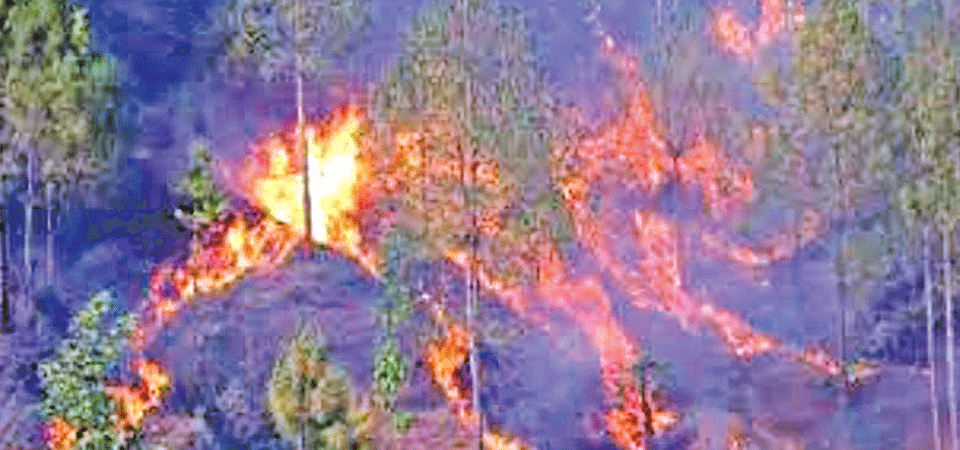Human Health Vs Air Pollution

Dr. Ram Sagar Pandit
Environment refers to the surrounding objects influencing the development or growth of people, animals and plants; living or working conditions etc. Nature has, in fact, become synonymous with the environment and man is an important factor affecting the environment Man is affected by biophysical limitations, behavioural controls and resource availabilities.
The survival of the human body depends on the factors like oxygen, heat, light, humidity and precipitation, wind, fog, clouds, atmospheric electricity and space. Natural resources support human activities, economic viability, social organization, political stability, international relations etc.
Man is the chief component of the environmental system, who plays different roles as biological/physical man, social man, economic man and technological man.
Environment
The environment determines the natural function of human beings such as birth, growth, health and deaths in the same manner as the cases of other organisms. But among them, man is the most developed and advanced animal, is capable of making a substantial change in the natural environment to make it suitable for his living. In this way, the rapid growth of the human population begins the degradation of the environment at the global level.
Environment pollution means lowering environmental quality at a local scale caused exclusively by human activities. Now, Nepal is affected more by air pollution of the environment.
Air Quality Index (AQI) in the valley has exceeded the risk level due to the higher level of air pollution. According to the World Health Organization (WHO) standards, AQI should be less than 35. AQIof 51 to 100 is considered normal. AQI above 201 is unhealthy and above 301 is fatal.
Now the main causes of air pollution are fire incidents in several forests and lack of pre-monsoon rains in the country. Especially Kathmandu is more affected due to the thick settlement of the human population and hazy blankets of air pollution. The pollution level will not decrease until it rains in the valley. The forest fires are increasing regularly nowadays. It results from thick hazy blankets all over the country.
A survey report shows the trend of forest fires due to carelessness 32%, targeted-64% and no opened any cause 4%. This event is to need control in time. The wildfire suddenly has arisen at the places of 728 in 66 districts on the dated 4th April 2021. The Kathmandu valley is badly affected by such fire incidents of several forests.
The effects of air pollution on human health are very complicated. Major diseases created by air pollution are respiratory infections, heart disease, chronic obstructive pulmonary diseases, stroke and lung cancer.
The low and middle-income countries are more affected by poor air quality born diseases. Carbon monoxide is a major pollutant from air pollution for the human community because it combines with haemoglobin molecules of human blood much faster than oxygen, forms carboxyhemoglobin (CoHb) and exasperates heart attack and also affects the nervous system.
Depletion of ozone due to Chlorofluorocarbons (CFCs) increases skin cancer mainly among white people. Sulphur dioxide creates smogs that block the respiratory system of human bodies and causes the deaths of human beings.
Another pollutant of air pollution is Sulphur dioxide (SO2) causes diseases of the eyes, throat and lungs. It also causes acid rains which adversely affects the health of human beings. Nitric oxide (NO) increases respiratory problems, gum inflammation, internal bleeding, oxygen deficiency, pneumonia and lungs cancer. Different problems have arisen from air pollution. Now, for the safety of life, air pollution has to be controlled at any cost.
Nepal has not been affected by anyone source of pollutants. Deflation of sands and dust, industries, urban centres, automobiles, aircraft, agriculture residues, power plants etc are major sources of air pollution. These pollutants affect the air quality.
Pollution Control
Control of air pollution depends on the planned economic development, growth of smokeless industries, well managed modern urban development. Now the relation between human beings and wildlife is very weak due to deforestation. Human growth and afforestation are negatively related. The major measures of air pollution control may depend on the following steps:
i. To create awareness among the people to save the nearby forests from catching fires.
ii. To manage regular monitoring of the existing level of air pollution.
iii. To inform the general public of the adverse effects of air pollution on their health and wealth.
iv. To search for alternative less harmful products such as solar-powered vehicles.
v. To control the wildfires, unmanaged urbanizations, unplanned economic development and smoked industries.
vi. To use the gas fires in the place of wood and dung fires.
The immediate concern of the human community is to reduce the emissions of chlrofluoro carbons, halogen, hydrocarbons oxides of sulphur and nitrogen, carbon monoxide and greenhouse gases and particulate matter and smokes.
(The author is a retired Associate Professor at TU)
Recent News

Do not make expressions casting dout on election: EC
14 Apr, 2022
CM Bhatta says may New Year 2079 BS inspire positive thinking
14 Apr, 2022
Three new cases, 44 recoveries in 24 hours
14 Apr, 2022
689 climbers of 84 teams so far acquire permits for climbing various peaks this spring season
14 Apr, 2022
How the rising cost of living crisis is impacting Nepal
14 Apr, 2022
US military confirms an interstellar meteor collided with Earth
14 Apr, 2022
Valneva Covid vaccine approved for use in UK
14 Apr, 2022
Chair Prachanda highlights need of unity among Maoist, Communist forces
14 Apr, 2022
Ranbir Kapoor and Alia Bhatt: Bollywood toasts star couple on wedding
14 Apr, 2022
President Bhandari confers decorations (Photo Feature)
14 Apr, 2022










